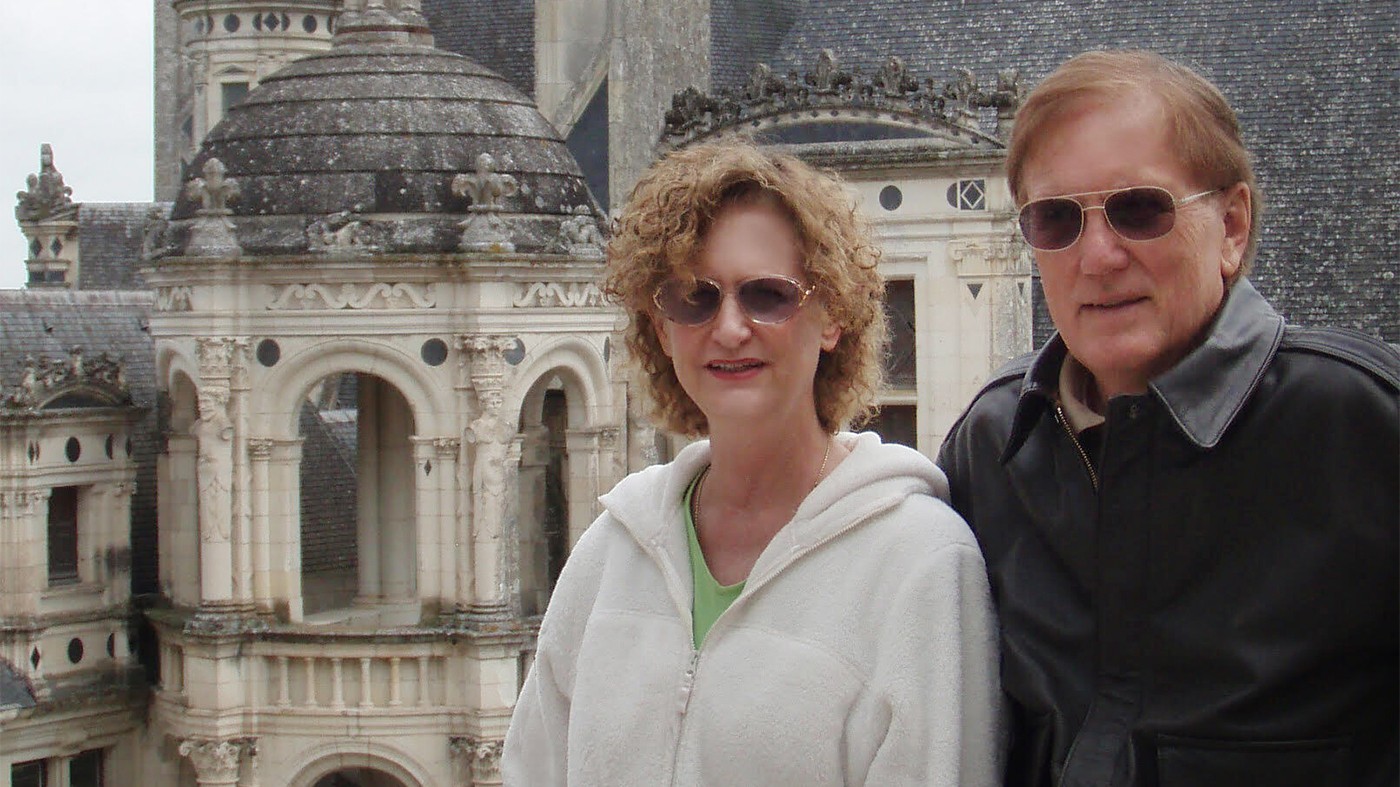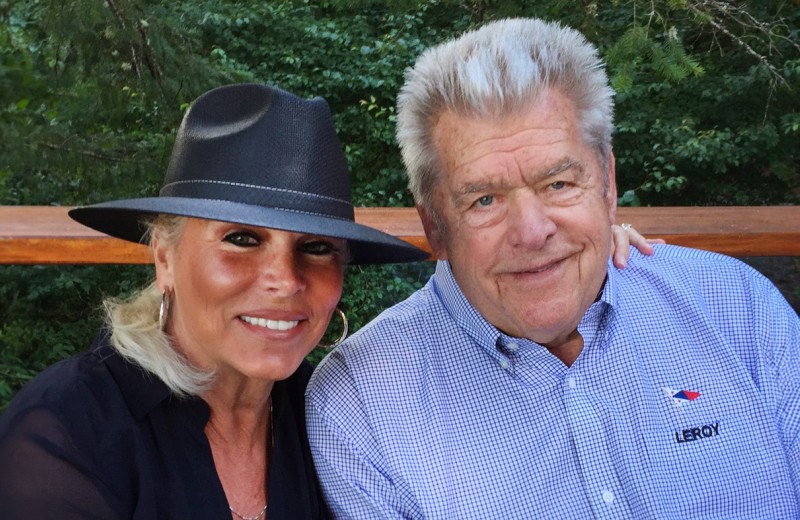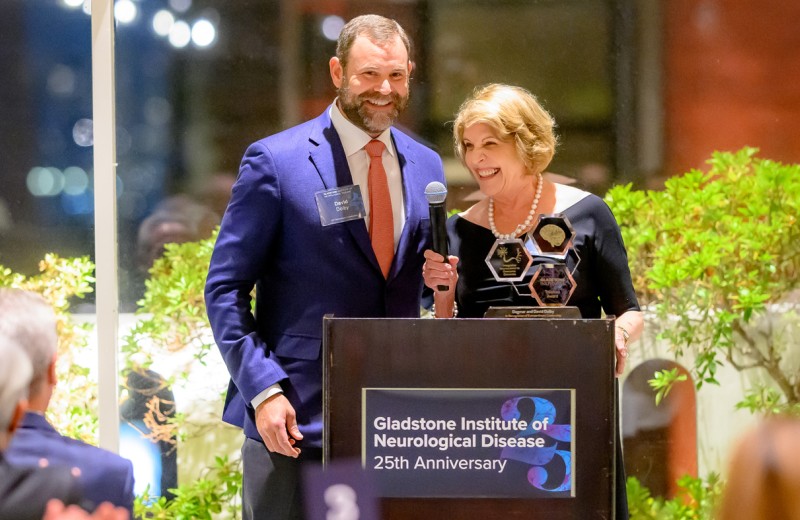Gladstone NOW: The Campaign Join Us on the Journey✕

Joanne (left) and Mark (right) Perra, long-time Gladstone supporters, explain why they think everyone can benefit from biomedical research. Photo courtesy of Mark and Joanne Perra.
In conversation with Gladstone Director of Philanthropy, Chris Nicholson, donors Mark and Joanne Perra share their thoughts regarding how they became involved with Gladstone and what they are hoping to accomplish through their current and planned gifts.
The Perras first came into contact with Gladstone through their relationship with founding president, Robert Mahley, and his wife Linda. Mark and Robert served together on the US Board of Directors for Scientific Technology and Language Institute, an international development and humanitarian organization that serves in Kyrgyzstan and northeast Iraq.
Supporting community organizations and promoting education in science, technology, engineering, and mathematics (STEM) among underserved youth have been long-time passions for Mark and Joanne. Over the past 20 years, they have done extensive volunteer work as well as donated to over 15 nonprofit organizations, with a primary focus on offering children in Oakland, CA, and southeast India educational opportunities to ultimately ease generational poverty and economic inequity.
More recently, the COVID-19 pandemic has highlighted the fact that disease disproportionally affects underserved populations such as these. The Perras believe that Gladstone’s research on unsolved health conditions is foundational to long-term improvement in health, welfare, and prosperity of the world’s most disadvantaged populations.
How were you introduced to Gladstone?
In the 2000s, we had the pleasure of attending several President’s Council symposia at Gladstone, which we genuinely enjoyed because of our professional careers in science and engineering. At that time, however, we weren’t necessarily thinking that we would become Gladstone donors. After learning of Gladstone’s research on Alzheimer’s disease and experiencing a long journey with Alzheimer’s in our own family, Gladstone’s mission became more personal to us and we were drawn closer.
Why do you support Gladstone?
We believe that the potential exists for every human being to—sooner or later—become a beneficiary of Gladstone’s mission-driven science.
Scientists at Gladstone deliver societal value and impact that is effective, scalable, and enduring. We support Gladstone Institutes because of their excellent leadership, their unconventional approach to selecting research topics, and because of their remarkable culture of integrity, teamwork, diversity, and scientific rigor. Gladstone is efficient, agile, and relatively small (as compared with large universities), yet Gladstone can leverage close affiliations with the finest large-scale research institutions in the world, such as UC San Francisco, UC Berkeley, and Stanford. It’s the best of both worlds.
Gladstone’s communications with donors are also outstanding. We greatly appreciate Gladstone’s offerings of high-quality, information-rich, interactive seminars and symposia. Donations don’t disappear into an impersonal “black hole,” as with some non-profits. The President’s Council symposia are genuinely exciting; these give us a sense that we are a real—albeit small—part of what is happening at the forefronts of science. Scientists at Gladstone are very skilled at communicating their challenges and successes in presentations that are accessible to non-specialists.
What do you hope to accomplish with your planned gift to Gladstone?
By supporting Gladstone researchers, we hope to participate in forging future research that will transform—perhaps even to the extent that Jennifer Doudna’s and Shinya Yamanaka’s work has—both biomedical research and healthcare for the long term.
By giving to Gladstone, we hope to add to the unrestricted funds that give some of the world’s finest biomedical researchers the freedom to—when necessary—explore research topics that might not otherwise be feasible to pursue within the bounds of conventional grant funding.
With our gift, we will also be supporting the mentoring of bright, young scientists for the future.
One mark we would love to make on the world would be to contribute—even in some small way— to overcoming a disease (such as Alzheimer’s) that has led to such great human suffering. In addition, we want to honor Joanne’s brother, who died of a neurological disorder in 1990.
What advice would you give to someone who is considering including Gladstone in their estate plan?
If you are grateful for the opportunities you’ve been given to accumulate financial wealth, planned giving to Gladstone is a wonderful, effective way to express that gratitude in a legacy that benefits generations to follow.
Enjoy the process! Experience the confidence that you will multiply and amplify your impact long after you are gone—in the manner that J. David Gladstone decided to so many years ago.
Why did you decide to include Gladstone in your estate plan?
We made a decision to include a bequest for a percentage of our estate to Gladstone. The percentage we decided on made sense to us based on thoroughly reflecting on our values and after having had years of interactions with countless nonprofits. Gladstone has always exceeded our investment standards, so it was one of the very few that rose to the top.
For us, this was a stress-free decision, in part because including Gladstone in our estate plan didn’t affect family finances during our lifetimes.
We are delighted to know that the resources we were given during our lifetimes will be supporting medical breakthroughs for generations to come.
Support Discovery Science
Your gift to Gladstone will allow our researchers to pursue high-quality science, focus on disease, and train the next generation of scientific thought leaders.
Embracing Change: Darlene Hines Shares Her Journey of Growth, Resilience, and Giving Back
Embracing Change: Darlene Hines Shares Her Journey of Growth, Resilience, and Giving Back
Longtime Gladstone supporter Darlene Hines reflects on her journey of learning, growth, and giving after her husband’s passing
Donor StoriesVisionary Philanthropists Establish Center to Harness Computational Biology for Cancer Research
Visionary Philanthropists Establish Center to Harness Computational Biology for Cancer Research
A search for the brightest minds in cancer and AI led Hope and Sanjit Biswas to give in their own backyard.
Philanthropy Donor Stories Cancer Biswas Center for Transformative Computational Cancer Biology Data Science and Biotechnology Pollard Lab AI Big DataThe Risk and the Reward
The Risk and the Reward
How the Dolby family works to improve outcomes for people with Alzheimer’s disease
Donor Stories Alzheimer’s Disease



